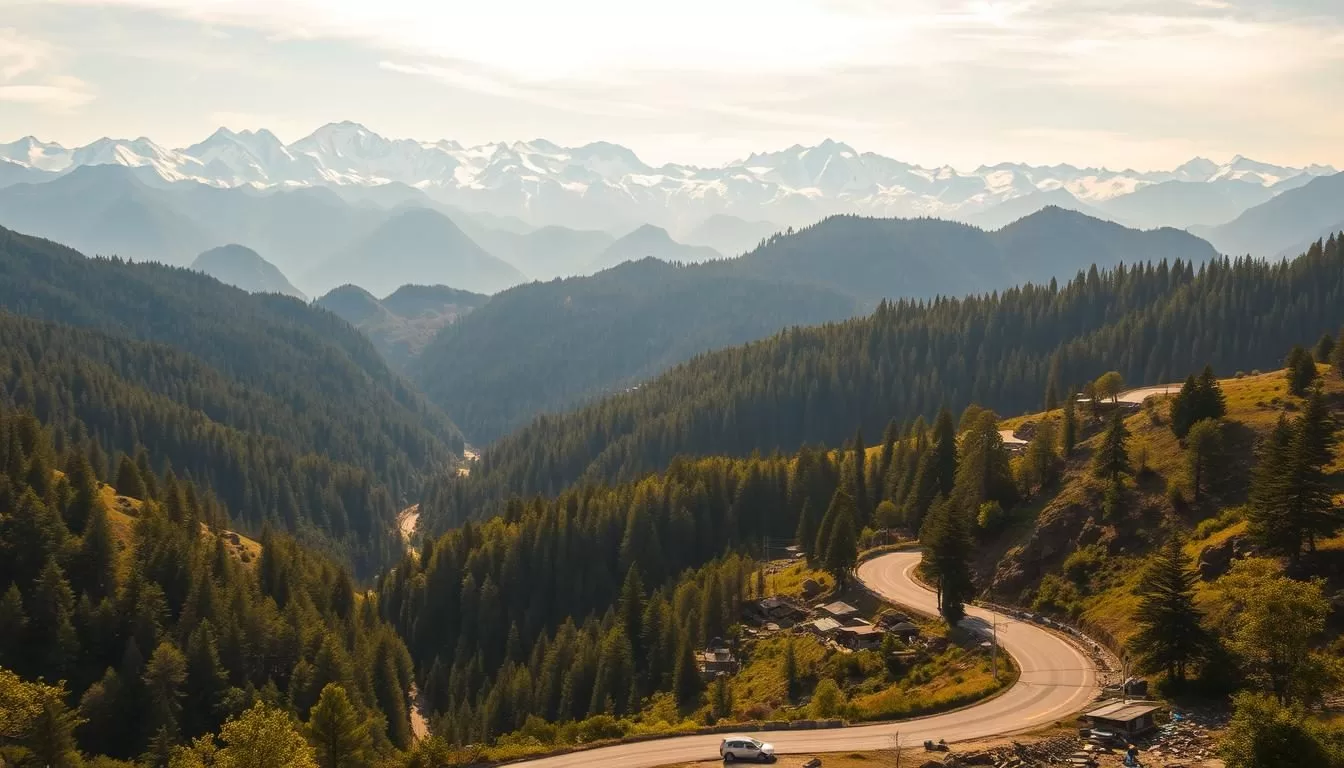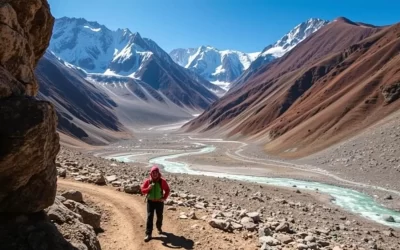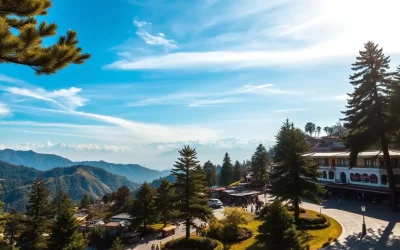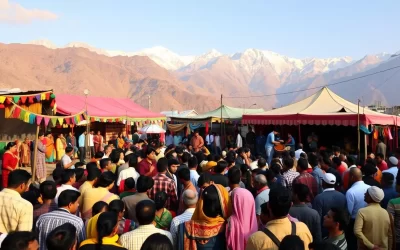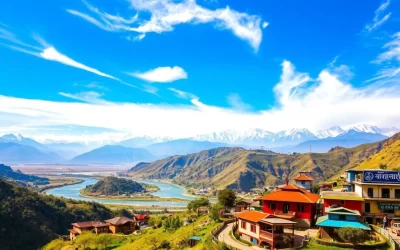✓ Accommodations ✓ Flights ✓ Rental Cars
Planning a trip to Uttarakhand requires understanding its unique weather patterns, which differ dramatically from other parts of India due to its mountainous terrain and varying altitudes.
As you prepare for your journey, you’ll want to know the best time to visit this beautiful region. The diverse landscapes and climate zones in Uttarakhand significantly impact your travel experience throughout the year.
With this comprehensive guide, you’ll discover how the weather changes across different regions, from the higher Himalayan areas to the lower foothills and valleys, helping you pack appropriately and plan activities effectively.
Understanding the seasonal variations will enable you to make the most of your trip to this stunning northern Indian state.
Understanding Uttarakhand’s Climate Zones
Traveling through Uttarakhand, you’ll encounter different climate zones shaped by the region’s dramatic elevation changes. The state’s diverse geography, ranging from the Himalayan mountains to the foothills and valleys, creates a variety of weather patterns across different levels and hill stations.
This variation significantly impacts the time of your visit and the experiences you can have. Understanding these climate zones is crucial for planning your travel itinerary and making the most of your trip.
The Himalayan Region Climate
The Himalayan region of Uttarakhand is characterized by cold winters and mild summers. During the winter months, this area receives heavy snowfall, making it ideal for winter sports. The temperatures drop significantly at higher elevations, creating a distinct seasonal pattern that attracts tourists looking for a winter wonderland experience.
The Foothills and Valley Weather Patterns
In contrast, the foothills and valleys, such as Haridwar, experience a milder climate compared to the higher Himalayan regions. These areas have hotter summers and cooler winters, with temperatures remaining relatively moderate throughout the year. This makes them suitable for visits during various seasons, depending on your preference.
How Altitude Affects Temperature in Uttarakhand
Uttarakhand’s dramatic elevation changes create significant temperature variations, with approximately a 6°C drop for every 1,000 meters increase in altitude. For instance, traveling from lower cities like Haridwar (elevation around 300m) to higher destinations like Auli (elevation around 2,500m), you’ll notice temperatures can be 10-15°C cooler.
| Region | Elevation (meters) | Temperature Variation (°C) |
|---|---|---|
| Haridwar | 300 | Reference |
| Auli | 2,500 | -10 to -15 |
| Mussoorie | 2,000 | -8 to -12 |
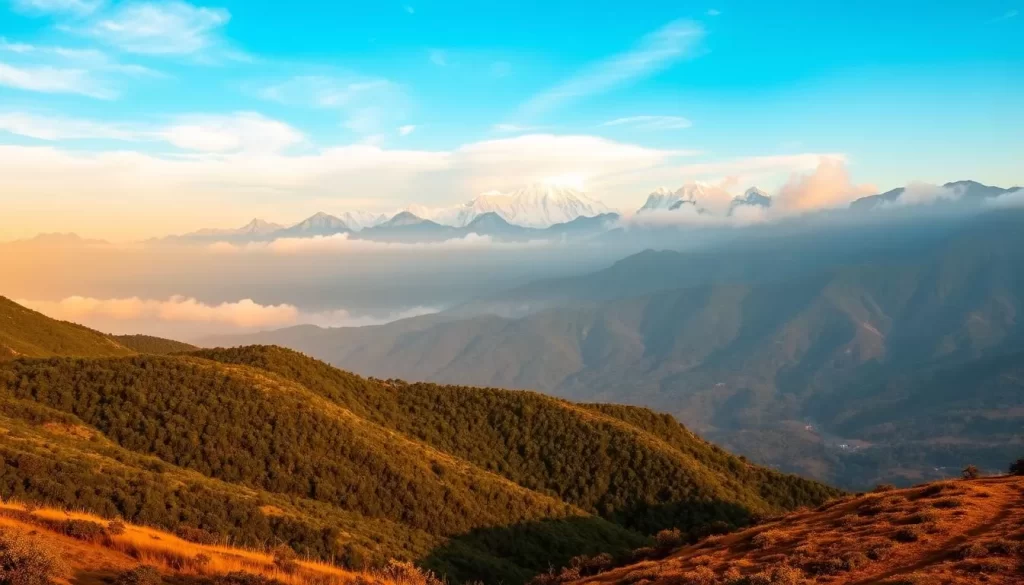
Uttarakhand, India: Best Months for a Weather-Savvy Trip
The weather in Uttarakhand can significantly impact your travel plans. Understanding the best time to visit is crucial for a memorable trip.
March to June: Perfect for Hill Stations
The period from March to June is ideal for visiting hill stations in Uttarakhand. During these months, the weather is pleasant, making it perfect for outdoor activities. Places like Mussoorie and Nainital are popular during this season. The heat from the plains is unbearable, making these hill stations a comfortable escape.
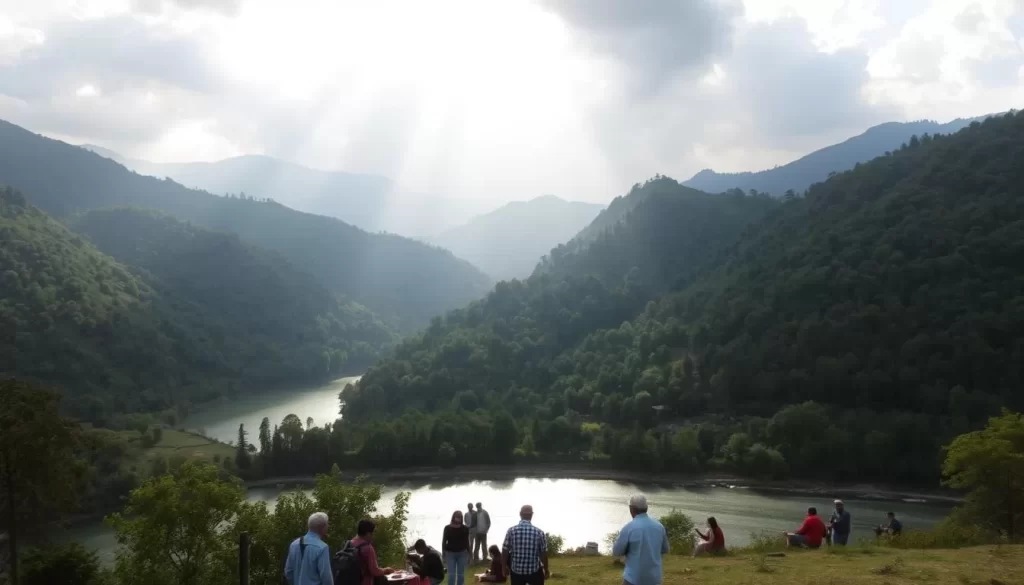
October to February: Ideal for Sightseeing and Trekking
For those who enjoy sightseeing and trekking, the months from October to February are the best. The weather is cool and clear, offering breathtaking views of the Himalayas. This period is also ideal for adventure activities like trekking and camping. The clear skies and comfortable temperatures make it an ideal time to visit Uttarakhand.
Months to Avoid and Why
The monsoon season, which spans from June to September, is generally best avoided. During this period, heavy rainfall can cause landslides and road closures, particularly in the mountainous regions. The increased humidity and risk of water-borne diseases are additional concerns. While the monsoon brings lush landscapes, it also brings challenges that can disrupt travel plans.
If you must travel during the monsoon season, consider visiting lower altitude regions like Dehradun and Haridwar, which experience less severe effects compared to the higher mountain areas.
Seasonal Breakdown: What to Expect Year-Round
Uttarakhand’s diverse climate zones make it a year-round destination, with each season offering a unique experience. Understanding the seasonal breakdown is crucial for planning your trip.
Summer (March-June): Comfortable Escapes from the Plains
Summer is a great time to visit Uttarakhand’s hill stations as the temperatures are pleasant, making it an ideal escape from the sweltering heat of the plains. The temperatures range from 15°C to 25°C, perfect for sightseeing and outdoor activities.
Monsoon (July-September): Lush Landscapes and Challenges
The monsoon season brings lush greenery to Uttarakhand, but it also poses challenges due to potential landslides and roadblocks. The region receives significant rainfall, making some areas inaccessible.
Autumn (October-November): Clear Skies and Perfect Views
Autumn is characterized by clear skies and comfortable temperatures, making it an ideal time for trekking and sightseeing. The weather is generally stable, with minimal rainfall, offering perfect views of the Himalayas.
Winter (December-February): Snow-Covered Magic
Winter transforms Uttarakhand into a snow-covered wonderland, especially in the higher regions. Places like Auli and Munsiyari become popular destinations for skiing and snow activities. The winter season is ideal for experiencing the region’s natural beauty in a serene and peaceful environment.
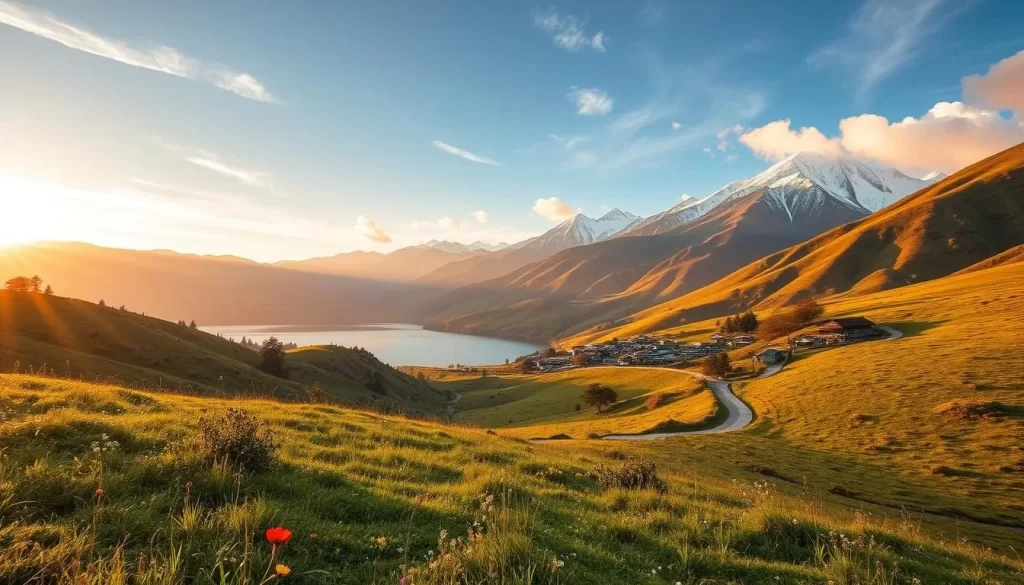
| Season | Characteristics | Best For |
|---|---|---|
| Summer | Pleasant temperatures, greenery | Sightseeing, outdoor activities |
| Monsoon | Lush landscapes, potential landslides | Trekking (with caution) |
| Autumn | Clear skies, comfortable temperatures | Trekking, sightseeing |
| Winter | Snow-covered landscapes, cold temperatures | Skiing, snow activities |
Top Destinations in Uttarakhand by Season
As the seasons change, Uttarakhand transforms into a myriad of exciting destinations. Whether you’re looking for a relaxing getaway or an adventurous escapade, Uttarakhand has something to offer throughout the year.
Summer Hotspots: Mussoorie, Nainital, and Valley of Flowers
During the summer months, places like Mussoorie, Nainital, and the Valley of Flowers become the perfect escapes from the sweltering heat of the plains. Mussoorie, with its charming colonial architecture and panoramic views, is a favorite among tourists. Nainital, known for its serene lake and surrounding hills, offers a tranquil retreat. The Valley of Flowers, a UNESCO World Heritage Site, is a haven for nature lovers and trekkers.

Monsoon Retreats: Chakrata and Lansdowne
For those who enjoy the monsoon, Chakrata and Lansdowne are ideal destinations. Chakrata, with its dense forests and untouched beauty, offers a unique monsoon experience. Lansdowne, known for its pleasant weather and scenic views, is perfect for a relaxing monsoon getaway.
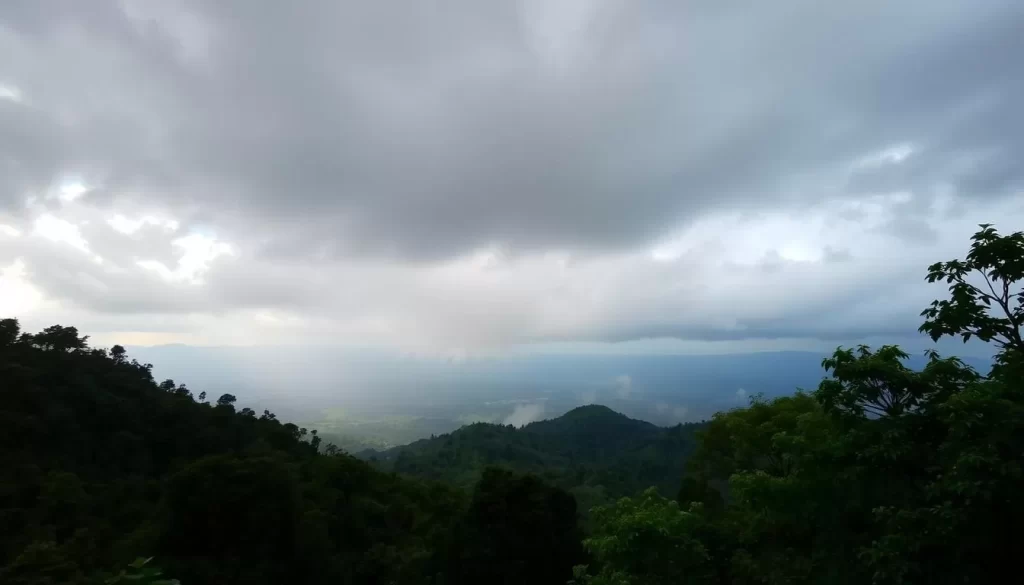
Autumn Adventures: Chopta, Auli, and Binsar
Autumn in Uttarakhand brings clear skies and comfortable temperatures, making it an ideal time for trekking and sightseeing. Chopta, often referred to as the “Mini Switzerland” of India, offers breathtaking views of the Himalayas. Auli, with its skiing slopes and scenic beauty, is a great destination for adventure seekers. Binsar, known for its panoramic views of the Himalayan range, is perfect for nature lovers.
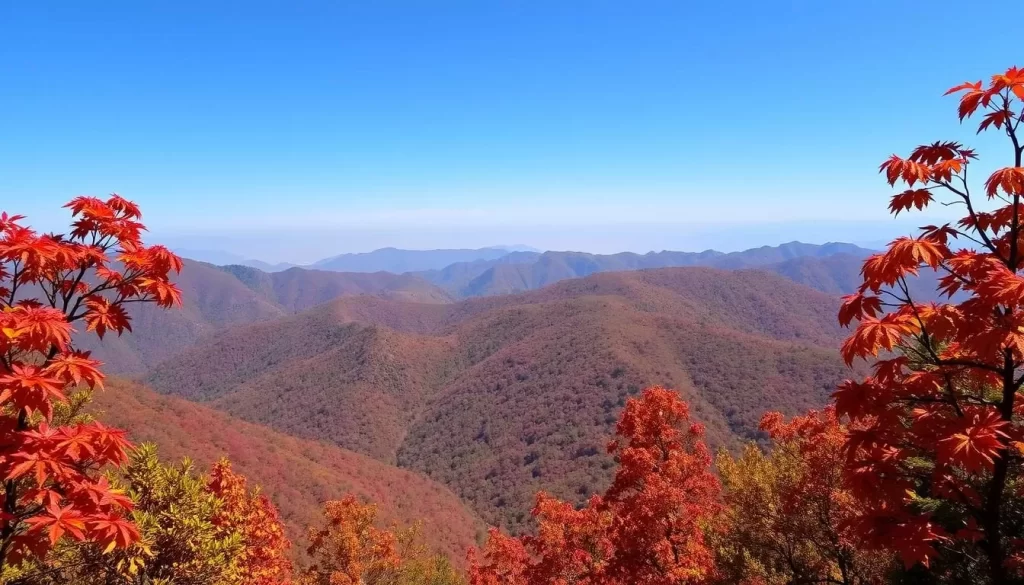
Winter Wonderlands: Auli, Munsiyari, and Dhanaulti
Winter transforms Uttarakhand into a snow-covered paradise. Auli becomes a premier skiing destination, with well-maintained slopes and professional instructors. Munsiyari offers panoramic views of the Panchachuli peaks and unique trekking experiences. Dhanaulti provides a more accessible winter experience, with its eco-parks and potato farms covered in light snow, making it perfect for families.
Image of Auli during winter
Uttarakhand’s Festivals and Cultural Events by Season
As you plan your trip to Uttarakhand, understanding the local festivals and cultural events can enhance your experience. The state’s rich cultural heritage is reflected in its diverse festivals, which vary across different seasons.
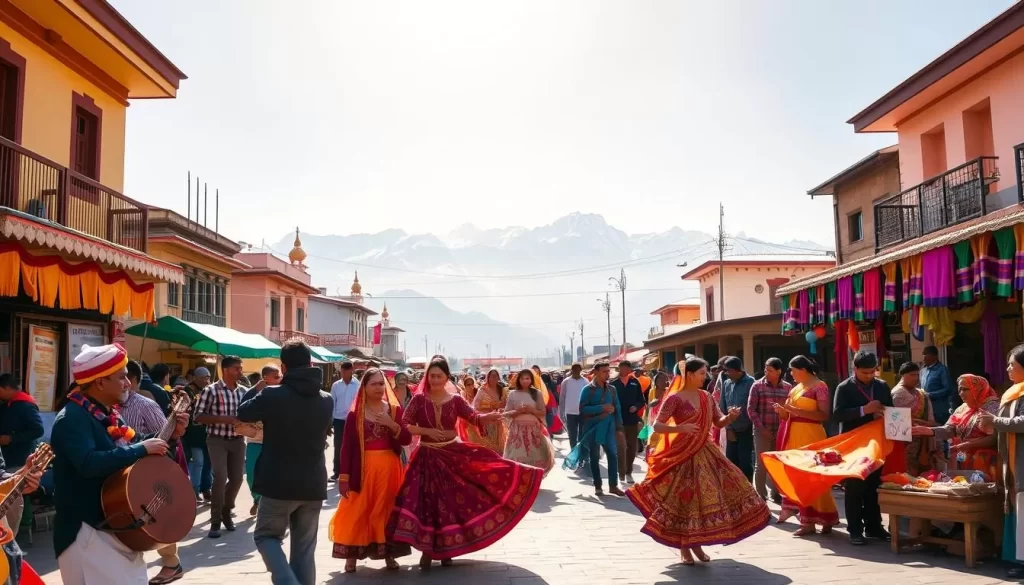
Spring and Summer Celebrations
During spring and summer, Uttarakhand comes alive with various festivals. The spring season is marked by the Basant Panchami festival, which celebrates the arrival of spring. Summer is the time for the Ganga Dussehra festival, honoring the holy Ganga River. These festivals offer a glimpse into the region’s vibrant culture and are a great time to visit.
Autumn and Winter Festivals
Autumn in Uttarakhand is celebrated with the Navratri festival, a time of worship and festivities. Winter brings the Makar Sankranti festival, marking the beginning of longer days. These festivals are significant in the region’s cultural calendar and provide a unique experience for visitors.
Religious Pilgrimages and Weather Considerations
Uttarakhand is home to several important religious pilgrimages, including the Char Dham Yatra, which is heavily weather-dependent. The best time for this pilgrimage is from May-June and September-October, avoiding peak summer crowds and monsoon-related hazards. Other significant pilgrimages include the Kumbh Mela and Nanda Devi Raj Jat Yatra, each occurring once every 12 years. Weather considerations are crucial for these journeys, as many sacred sites are located at high altitudes where conditions can change rapidly.
- The Char Dham Yatra temples are typically open from late April/early May to October/November.
- May-June and September-October are ideal for the Char Dham Yatra.
- The Kumbh Mela, held in Haridwar, attracts millions of pilgrims and requires extensive planning.
Practical Weather-Based Travel Tips for Uttarakhand
As you plan your trip to Uttarakhand, understanding the weather can make all the difference. To ensure a smooth journey, always check road conditions before traveling, especially during the monsoon season when landslides can occur.
Packing in layers is advisable due to extreme temperature variations between day and night, particularly at higher elevations. For winter visits (December-February), ensure your accommodation has adequate heating facilities.
For wildlife enthusiasts, the best time to visit parks like Jim Corbett and Rajaji National Park is from November to March. Respect local customs by dressing modestly and removing shoes when required, especially during festivals and at religious sites.
By being prepared and flexible with your itinerary, you can have a more enjoyable and stress-free travel experience in Uttarakhand. Consider hiring local guides who understand regional weather patterns to help adjust your plans accordingly.
The above is subject to change.
Check back often to TRAVEL.COM for the latest travel tips and deals.
